Autumn in Tasmania is all kinds of beautiful.
Gold, orange, red, yellow, green – the colours are striking and because there’s so much countryside and bushland, the state really puts on a show.
You could say the same of autumn everywhere, but this little island is home to an autumn spectacle you won’t find anywhere else.
The Turning of the Fagus.
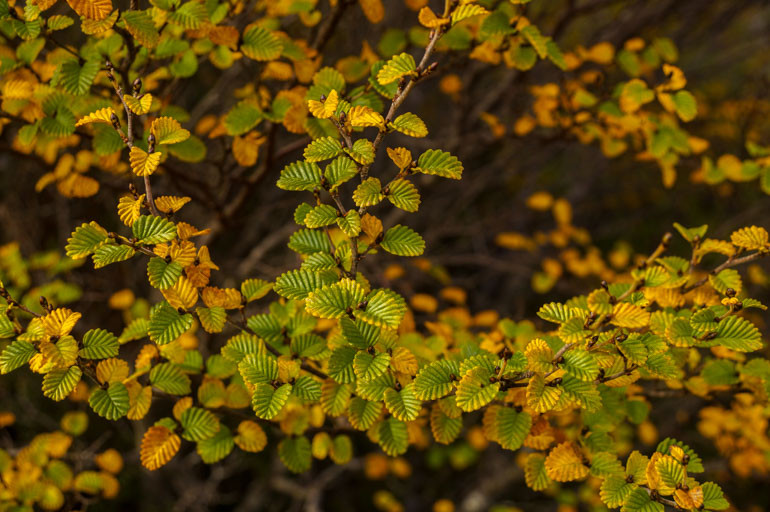
It sounds like some sort of pagan festival, and perhaps it could be, if anyone could predict exactly when best to celebrate it.
Both nature and Tasmania like to keep things unpredictable.
Fagus, known by the more botancially minded as deciduous beech (Northofagus gunnii), is Australia’s only cold-climate deciduous tree. While it has relations in South America and New Zealand, fagus is unique to Tasmania. And as if existing only on a heart-shaped island at the bottom of Australia doesn’t make the fagus rare enough, it’s only found in two places on that heart-shaped island – Cradle Mountain and Mount Field National Park.
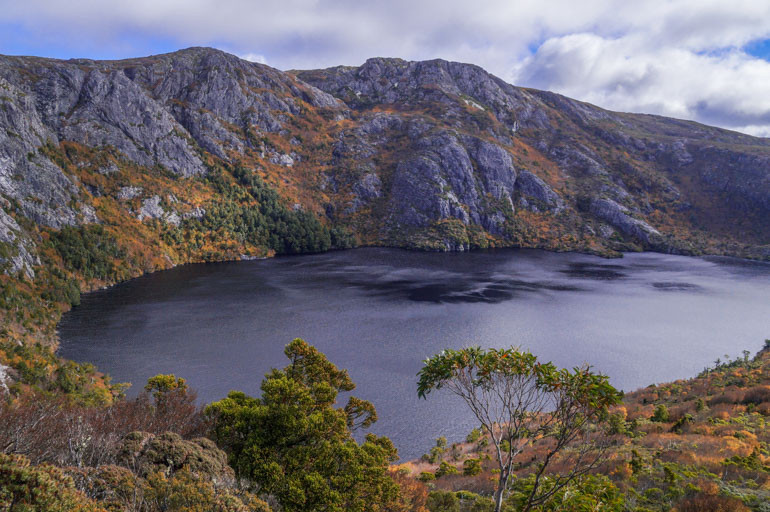
For most of the year the fagus would go unnoticed by most visitors; its green leaves blending into its surroundings. But each autumn there is a window when the fagus turns from green, to red, to gold.
It’s a sight I’ve wanted to see for years, but I haven’t always been the best at exploring my own backyard. So this year, I headed for the hills.
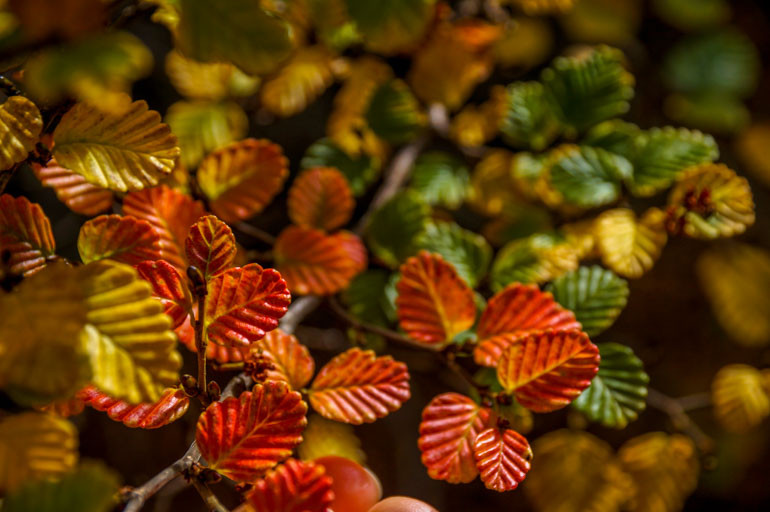
Cradle Mountain – Lake St Clair National Park has become my favourite place to visit since I moved back to Tassie last year. I’ve always been drawn to mountains and Cradle is truly spectacular; not just the peak itself, but its surrounds. Through summer I hiked under sunshine and blue skies – and there were those horrible few days on the Overland Track – but I’ve been excited to experience the different seasons here.
The fagus turns between late April to early May, but as I said, it’s unpredictable. There were rumours it was past its best by the first of the month, but there was still loads of colour when I visited a few days later.
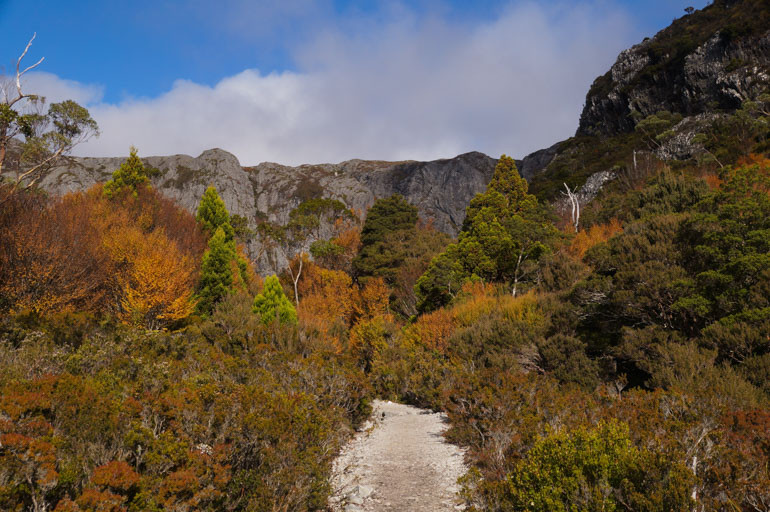
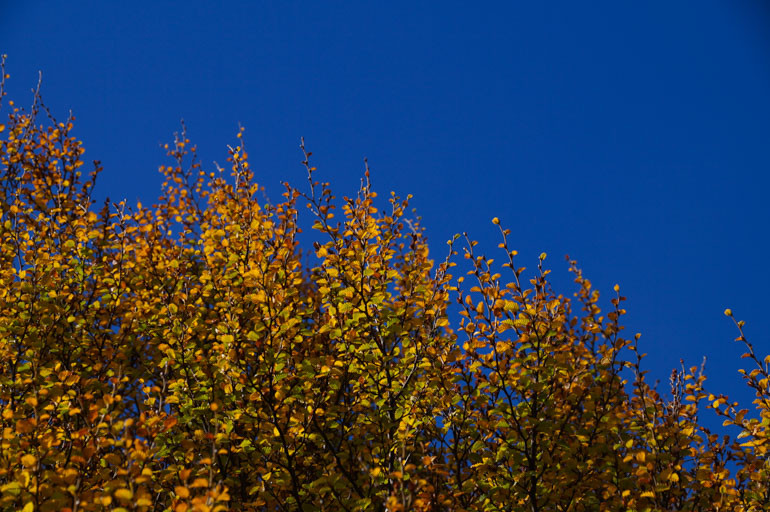
The turning of the fagus is an annual act of nature, but it has also become an event to the extent that each year nature lovers and photographers celebrate Fagus Week. On my walk to to Crater Lake I passed a troop of fagus hunters, cameras and tripods in hand, walking back to the car park.
Crater Lake is one of the most accessible places to see the fagus in all its glory. It’s still a hike, but not a tough one. Here the fagus grows along the track, so you can see it up close, and it also covers the slopes on the hills rising up from the lake. At the height of the transformation, which unfortunately I missed by about a week, it would be incredibly striking, but there was still enough colour to make the trek worth it and go a little nuts with my camera.
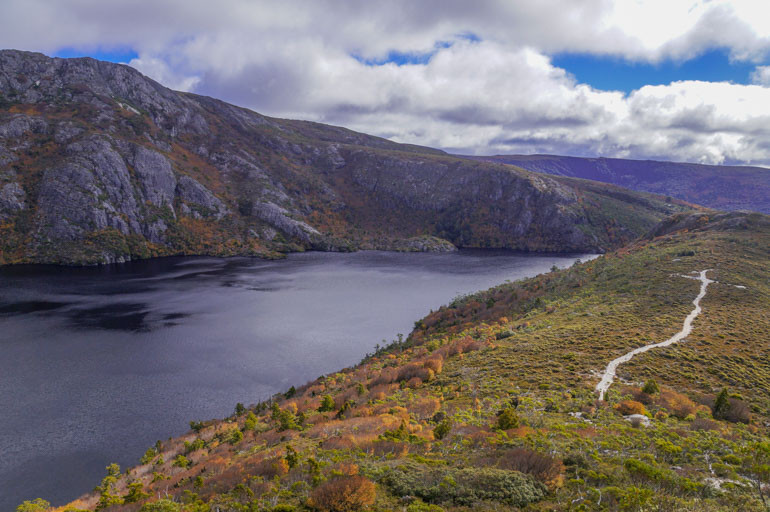
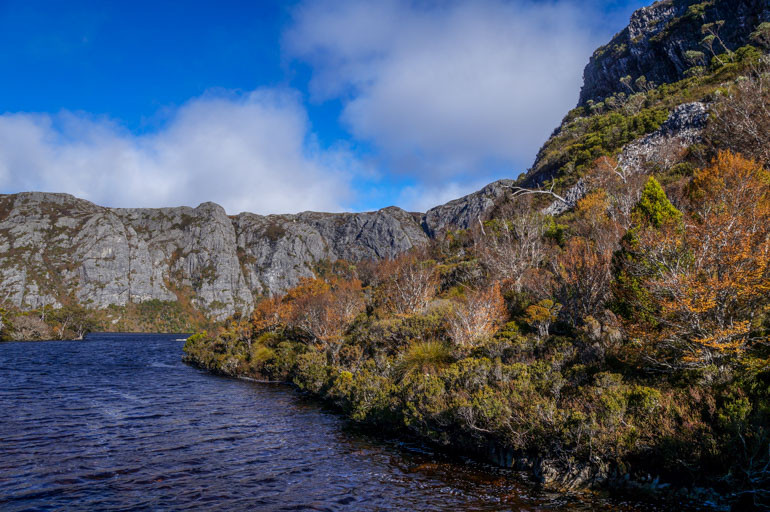
Seeing the fagus in person isn’t just about the pretty colours and photors – it’s a little bit magical to see something not found anywhere else on earth. The very existence of the fagus in Tasmania speaks to this world’s incredible history. Earlier species were found on Gondwana, which is why Northofagus are found in New Zealand and South America. Deciduous trees shed their leaves to survive inhospitable winters, but over time the warmer Australian winters made this defense redundant. Other plants thrived, while the fagus remained in remote wilderness areas where it continues to battle frost and snow.
Cradle Mountain, where about half the alpine flora is endemic, seems the perfect home.
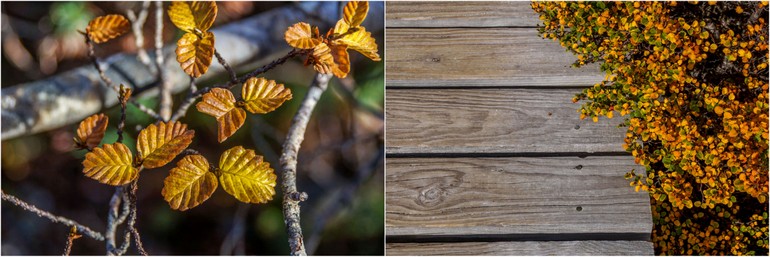
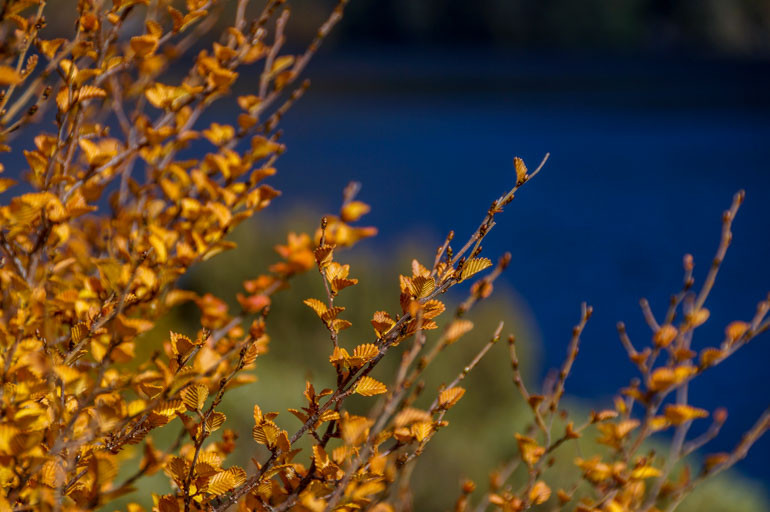
With the fagus turning earlier, and faster, than usual, the best displays were behind Cradle Mountain, where it isn’t as exposed to the elements. Since I literally didn’t have all day to reach this on foot, I hitched a ride with Cradle Mountain Helicopters to check it out in the afternoon. In the fading light it was hard to spot, but that tell-tale orange was there.
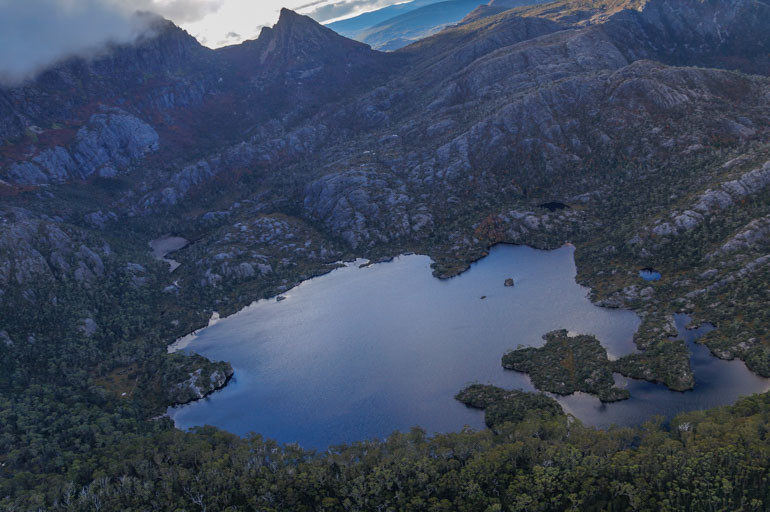
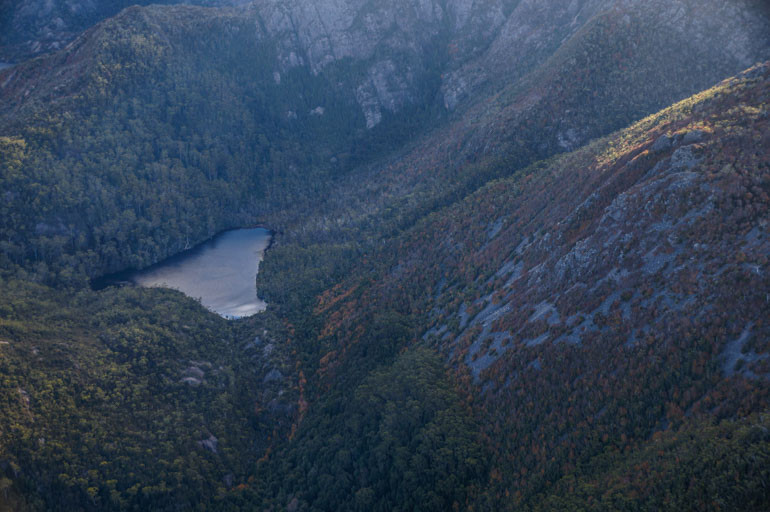
Crater Lake is a 2.5 hour return walk from Ronny Creek car park, Cradle Mountain. A National Parks pass is required to drive to Ronny Creek. Alternatively you can catch the shuttle buses from the visitor centre. More information about visiting Cradle Mountain is available on the Parks & Wildlife Service website.
A big shout out to Cradle Mountain Helicopters for another amazing flight.




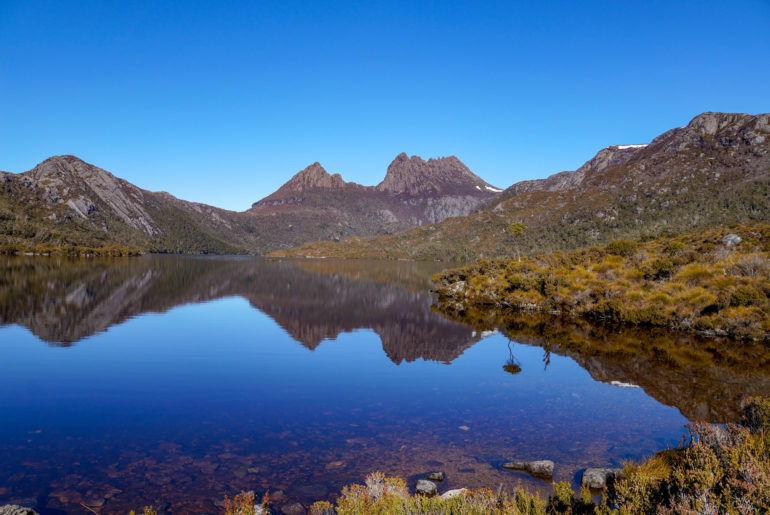
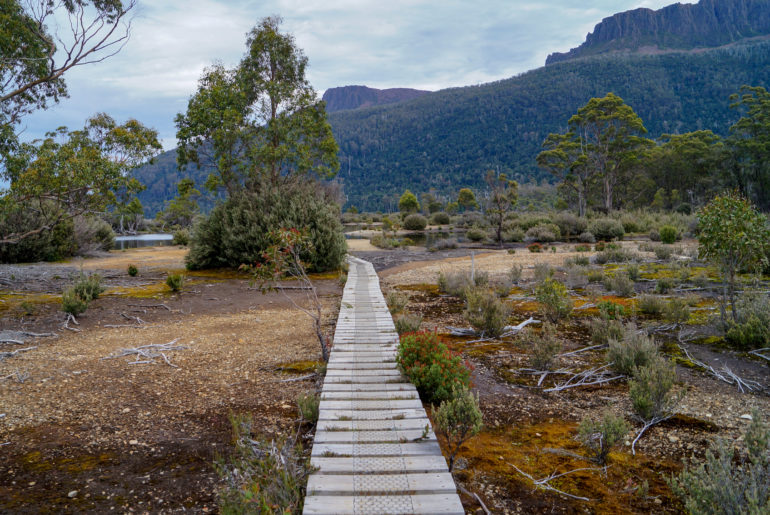
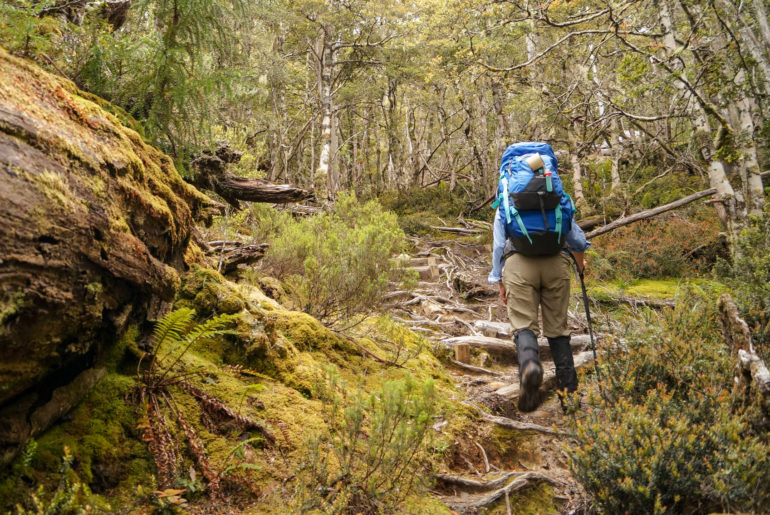
1 Comment
Very interesting article about the fagus (deciduous beech) of Cradle Mountain, Tasmania, as it changes colour for autumn. Makes me want to go to Cradle Mountain right now.